DIRAC 7.2 integrates the EN 1793-5/6 and EN 16272-5/6 parameter calculations that in previous versions were performed using a spreadsheet. This greatly reduces the time needed to arrive at the final results. This new version will automatically set the correct Adrienne time windows based on the barrier dimensions.
Reflection
To use this new feature, one can perform reference and barrier measurements as usual, but instead of using a script to process the measurements, we now use the Zircon dialog, which can be opened from the Process menu in the Project window.
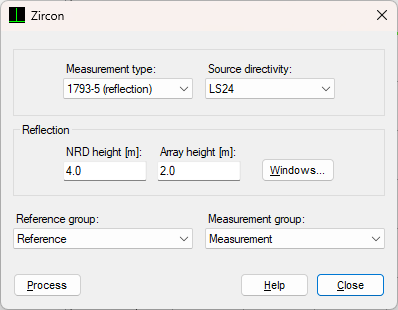
From the 'Measurement type' drop-down list you can now select the standard Dirac should follow when processing the measurements.
From the 'Source directivity' drop-down you can select the sound source that was used for the measurements.
Initially, only the LS24 for source is available, but you can add your own source directivity data by editing
the file 'C:\Users\
For reflection measurements the barrier height and the height of the center microphone (5) of the array must be entered. Based on this entry, Dirac will calculate the required Adrienne window lengths for each microphone and frequency band. You can check, and manually modify, the window lengths by clicking the 'Windows' button in the Zircon dialog.
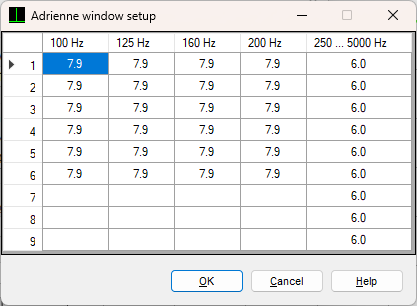
Using the 'Reference group' and 'Measurement group' drop-down lists you can select the appropriate group from the project containing the 9 reference and barrier measurements. There is no longer a need to give the groups a specific name, and the project may contain multiple reference and measurement groups.
Finally, the measurements can be processed using the 'Process' command button. This will create a new group with the same name as the measurement group but with suffix '_RI' containing 9 processed files. You can then close the Zircon dialog and inspect the relevant parameters for this group.
The measurement geometry and window setup can be changed after processing by opening the properties dialog for the group with the processed files.
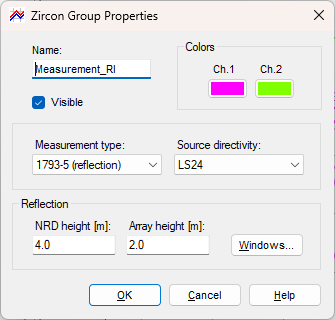
The RI (reflection index) parameter from previous versions of Dirac has now been renamed to RIp (partial reflection index), whereas the new RI parameter now represents the aggregated result for all 9 microphones. The RIp contains the corrections for geometric divergence, Cgain and source directivity, and the average RIp over 9 microphones is the equal to the RI.
The DLRI is available as a project level parameter from the new project node in the tree.
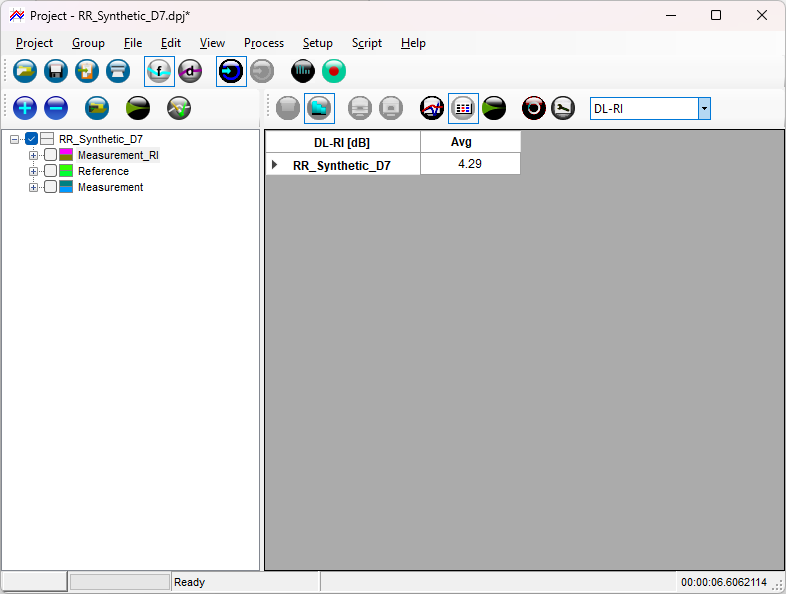
It is calculated from the average RI values over all (processed) groups and takes the traffic noise into account.
Transmission
For SI (sound insulation) measurements in accordance with EN 1793-6 and EN 16272-6 the Zircon dialog is somewhat simpler.
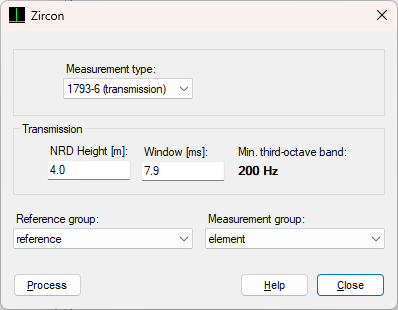
The barrier height determines the window length, but you can change the window length manually. The dialog indicates the minimum third-octave band that will have valid results for the given window length.
As with reflection measurements, the groups containing the reference and barrier measurements can be selected from the corresponding drop-down lists. Clicking the Process button will create a new group with 9 processed files. The new group will have the name of the measurement group with the suffix '_SI'.
The SIp (partial sound insulation) is calculated for each microphone, while the SI is the average over all 9 microphones. The DLSI can be calculated on the group level or on the project level, in which case it will use the average SI over all relevant groups.
Other changes
As referred to above, the project tree now contains a top level (project level) node that has the same name as the project. For most parameters it will display the project level average of that parameter over all groups. For specific parameters such as the DLRI it displays a value that is only available at the project level, not for individual groups or files.
When using Dirac for multi-channel measurements, more time is spent in the project window, while the IR view window is used less often. Therefore, the project window menu has been expanded to include common options such as Setup, Measure, RTA and a complete Help menu. Also, there is now the option to start Dirac in the project window rather than an IR view window. You can find this option in the Setup - Options dialog.
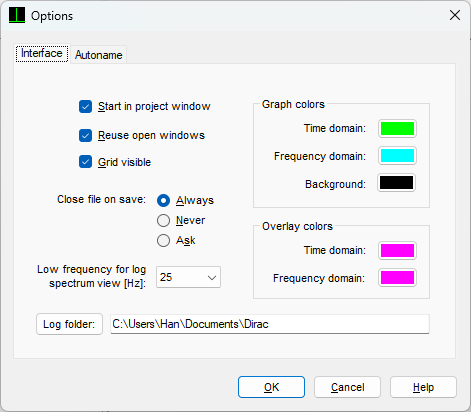
In a previous release, the requirement that output and input devices in a sound device setup have the same sample rate was removed. In this release, the requirement that both output and input must have the same sample format (number of bits) has been removed. This allows many more combinations, such as f.i. using a LAN-XI module for input and the HBK 2755 amplifier as USB connected output device.
As always, this release contains minor improvements and bugfixes. Please let us know if you find any problems.
